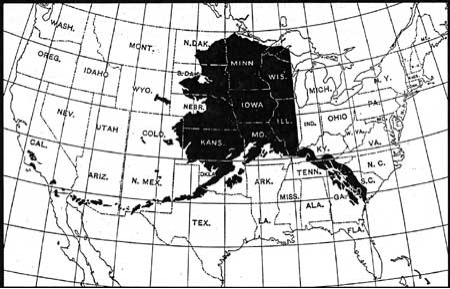Greetings! My name is kas aruskevich and I am principal of Evaluation Research Associates LLC. I live in Fairbanks and work primarily in rural Alaska. Alaska is known for its great natural beauty, extreme temperatures, and unique context of diverse and far-flung communities assessable only by air. Alaska is the largest state in the U.S.
Rural communities often have a small population and rarely have a local evaluator for hire. Consequently, a program evaluator is most often hired from outside the community or region. Helicopter evaluation is a depreciating term used to describe a drop in – evaluate – depart approach. Today’s post talks about methods to strengthen and add depth to evaluations that involve distance between evaluator and evaluand.
Hot Tip: First, context is important. Familiarize yourself with the community and region before you travel. Gather demographic data of the community, leading industry, and cultural composition. Learn about the organization hosting the program, before your first contact. Plan your site-visit around a community event so you can see the community in a broader context.
Rad Resource: The importance of context is discussed in New Directions for Evaluation Fall 2012, Issue 135.
Hot Tip: Next, work to build open communication with program staff. Begin with a teleconference to provide an opportunity to meet staff and organization and discuss program status. Teleconferences also give you a chance to describe your evaluation style and see if you are a ‘fit’ for the organization and the evaluation project.
ALWAYS include participatory methods. I don’t ‘come in’ as the expert with an unchangeable evaluation design, but instead write up suggestions for the evaluation to negotiate before a plan is finalized. As an itinerant evaluator you can’t be on site as often as you might like. Using a participatory evaluation approach, program staff can be involved in the evaluation through taking photos or identifying program participants or stakeholders to interview.
Rad Resource – Read more about participatory evaluation in Cousins and Chouinard’s new book Participatory Evaluation Up Close.
Hot Tip: Lastly, work to build a friendly relationship based on mutual interests with at least one person in the organization or community. After years of conducting evaluations, friendly relationships have evolved into continuing friendships. These friendships have mutual benefits, in-part, they are a bridge for the evaluator to learn community specific cultural protocols–very important to conduct evaluations in cross-cultural settings – which in turn can strengthen the program through appropriate evaluation.
Lesson Learned: Itinerant evaluation can be much more than a helicopter site-visit approach. Regular communication and working together with program staff as a team can expand the evaluative evidence collected and increase report credibility, relevance, and use by the program staff.
The American Evaluation Association is celebrating Alaska Evaluation Network (AKEN) Affiliate Week. The contributions all this week to aea365 come from AKEN members. Do you have questions, concerns, kudos, or content to extend this aea365 contribution? Please add them in the comments section for this post on the aea365 webpage so that we may enrich our community of practice. Would you like to submit an aea365 Tip? Please send a note of interest to aea365@eval.org. aea365 is sponsored by the American Evaluation Association and provides a Tip-a-Day by and for evaluators.

